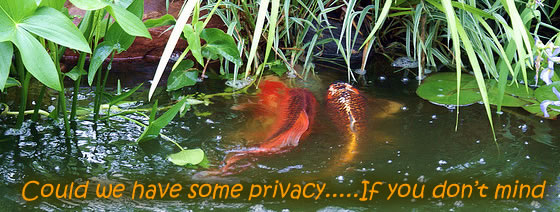As the weather warms up (yes it will one day) your female fish are quite likely to start producing eggs ready for spawning. If this is something you want to encourage then you need to take appropriate action.
First making eggs and the whole process around spawning uses a lot of protein and so getting your fish on to high protein foods (often called Growth Foods) as soon as possible can only help them get ready, be careful not to over feed though.
Click Here – To go to our Growth Foods page
In the wild fish spawn in and around plants, if you do not have any suitable plants in your ponds then the females can become egg bound and die in quite a horrible way. We offer artificial plants which can be used to give them an area on which to spawn and can also be removed afterwards if you want to take the eggs away to another location.
Click Here – To go to our Artificial Pond Plants page
The adult fish are exceedingly bad parents and as soon as the eggs are spawned they will start eating them. In most cases the fish spawn first thing in the morning and so one of the first signs that this has occurred is all of the fish are eating at/hoovering the sides of the pond. As previously mentioned the whole process is very rich in protein so another sign that they have spawned is a foam on the pond surface. This is called Protein Froth and is natural but unsightly oil which is produced by the high levels of protein discharged by the fish. We offer a product called Foam-Clear to get rid of the foam.
Click Here – To go to our Foam Clear product page
If you want to try to keep the eggs and encourage them to hatch then you need to isolate them from the adults. Some pond designs may have header ponds or area’s suitable for this, but most don’t and the eggs will need to be collected and moved to a separate pond/tank. Whilst in this separate area it is vital that the water moves and is aerated to prevent the eggs from being attacked by fungus. A small air pump is ideal for this.
Click Here – To go to our Air Pumps page
Obviously the idea of collecting the fertilised eggs and growing on the fry can be very attractive – mini fish farming, but be wary, as a rule you have a very high mortality rate, not only do the adults eat the eggs and fry, but the fry will eat one another as well, this is a natural process to ensure survival of the fittest. If however you are successful and by the time next spring comes around you have quite a few baby fish in the pond, so it is important to remember the load on the pond. 100 x 25mm (1”) fish will at least double in the first year and often treble in size, this can equate to 7.5m (300”) of fish or the equivalent of 10 x 750mm(30”) fish. So be prepared.


